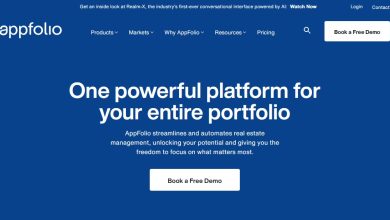
Content marketing is a great tool to help businesses connect with their users and achieve their business goals. This can include anything from generating leads and increasing sales to driving traffic to a website or blog. However, content marketing is split between business to business (B2B) and business to consumer (B2C) strategies.
This invites the question: what’s the difference between B2B and B2C content? The answer is simple: the difference lies in who you’re tailoring your marketing strategy to. The former (B2B) assumes that your reader or audience is another business, whereas the latter (B2C) is an individual consumer or customer.. In this article, I will walk you through the finer differences between B2B and B2C content, and how you can tailor your marketing strategy to each.
What is the Difference Between B2B and B2C Content?
All content is created with a specific reader in mind, which is why the main difference between B2Cand B2B content marketing lies in the details. The target audience is the most obvious difference.
With content created for businesses, the audience is often more than one individual. This can include several different executives, managers, and decision-makers of a selected industry or business. For B2C content, it is often targeted to an individual who falls under a predetermined demographic or typical customer base. The content is often created to drive the consumer’s decision based on emotions or impulses.
B2B vs B2C Marketing: How To Tailor Your Digital Marketing Strategy
A marketing strategy should consider the five basic elements of the marketing mix to lead a successful path:
Product
What is the product or service that you are offering? This can be tangible, such as a physical product, or intangible like a digital item or service. Aside from identifying what the product or service is, you need to figure out how this product or service will connect with the customer, and how you can make this appealing and desirable to them in your content marketing.
Price
Before you decide on the price of your product or service, consider what the market value is and what your competitors are charging. Price is often the deciding factor when it comes to making a decision about a purchase. Consider using psychological pricing tactics when advertising your product for an increased chance of gaining a sale.
Promotion
When you are planning out your promotional content, consider the following questions:
- How does your product/service benefit the consumer?
- What words would you use to describe this product or service?
- What are the main selling points?
- What tone of voice would appeal the most to your customer base?
- How do you plan on conveying that message in your content?
When putting together your promotional pieces or content marketing, keep your competitors in mind, identify what makes your product or service stand out and why customers should choose you. You will also need to consider different promotional strategies and channels. Are you going to write an article? E-mail? Are you going to create a video? Figure out what channel will best reach your audience and use that channel to launch your content.
Place
Place refers to where the target audience is located, where you plan on selling the product or service, and where you plan on promoting it. These details should be accounted for in detail in the marketing plan.
In digital marketing, you can easily access information about the demographics of different social media platforms which will help you identify what platform works best for your business. Keep in mind that certain platforms are better than others when it comes to promoting B2B content. For example, Linkedin can be used to target people based on things like their job title, skills, industry or you can even create account-based marketing campaigns that allow you to upload your prospects and target specific businesses and individuals.
People
Last but not least of the five Ps is people. First, let’s talk about the target audience. If you are just getting started you will probably need to make an educated guess on who would be interested in your product or service. Luckily with digital marketing many social media platforms and advertising opportunities also offer analytics that covers details on who is watching your video, who is not, and whether or not the campaign was successful.
Often you can set goals, a budget and identify whether or not your content is achieving what it was created for. You might need to adjust your content to appeal to your audience, or even try using a different channel. Eventually, you will find what resonates best with your audience.
You will also need to think about who is going to be involved in the marketing strategy process. At this point, you should have already identified what the product, price, promotion, and place are. Now you need to figure out who needs to be involved in the process. Do you need a social media manager? Do you need a copywriter or designer? Based on your plans, these details should be planned out ahead of time so that the execution of the marketing strategy is flawless.
In Conclusion
The difference between B2B and B2C content, at the end of the day, is pretty simple. What’s not always simple is putting together a great digital marketing strategy. That’s why breaking down the marketing mix makes things a little bit easier. If you are still having trouble, you can always count on digital marketing professionals to guide you in the right direction.
Author Bio:
Heather Grundy
Heather Grundy is an SEO Specialist with over 10 years of experience in the marketing industry. Her passion is helping businesses thrive, by providing strategic services to boost their online presence and support their business goals.





